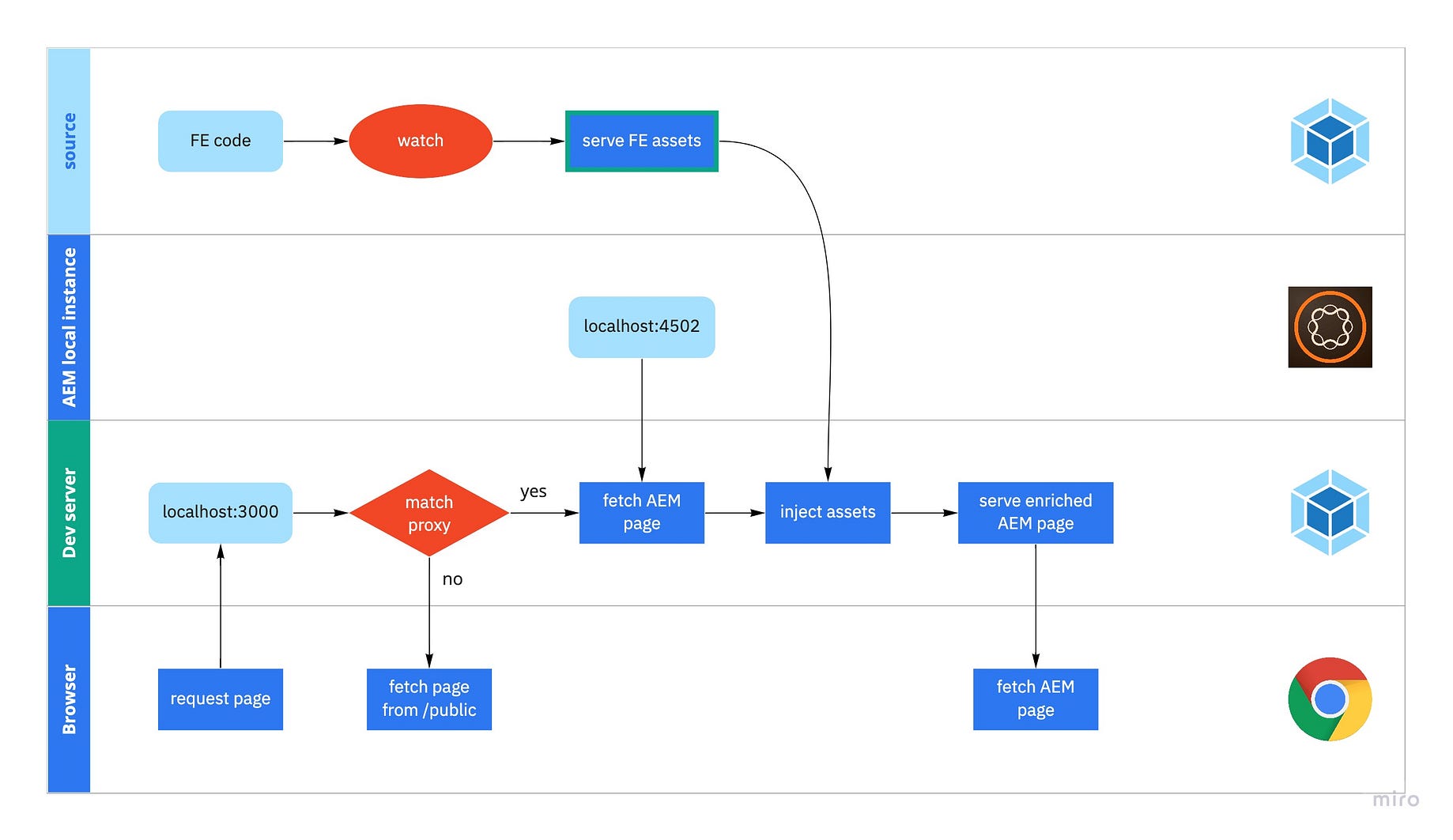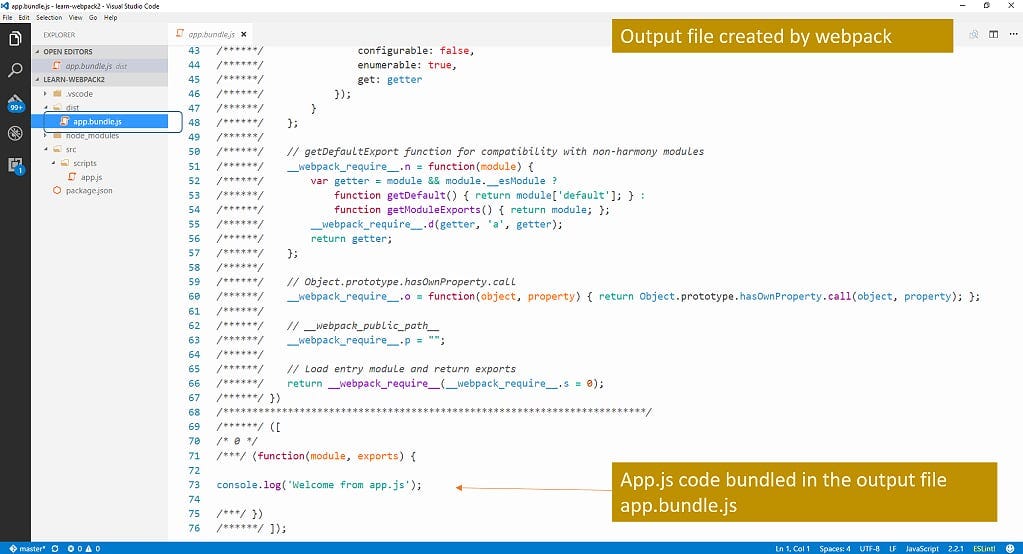

- #How to run webpack locally install#
- #How to run webpack locally code#
A string in here represents a path to a JavaScript file that will act as an entry point. But in this case I defaulted to development mode.Įntry – Accepts a string or an array of string. Mode – this property accepts 3 values, development, production, and none.Ĭertain modules, and Webpack optimization tools require specific modes. This step is a required otherwise Webpack will throw an error. Setup Webpack configuration for entry and output Speaking of, the Webpack configurations is nothing but an object that will needs to get export. It will be helpful when we need to define path values on our webpack configuration. This function is responsible to return a valid path.

I’m also creating a variable, resolveAppPath, that is assigned to a function.

I’m utilizing the filesystem ( fs) module to fetch me an absolute path of the current working directory of the project. And the module path, and fs are native Node.js modules. That’s because Webpack utilizes Node.js to run.
#How to run webpack locally code#
On the first couple lines of code you’ll notice that I’m importing modules that were not defined in the package.json file. Gets absolute path of file within app directoryĬonst resolveAppPath = relativePath => path.resolve(appDirectory, relativePath) Ĭonst host = || 'localhost' In the root of the project I will create a file named .įirst I’m going to add some helpful variables and functions.Ĭonst HtmlWebpackPlugin = require('html-webpack-plugin') Ĭonst appDirectory = fs.realpathSync(process.cwd()) The next step is to work on the webpack config file.
#How to run webpack locally install#
Go ahead and run npm install to install these dependencies. Npm start will run the command client webpack-dev-server and tell it to look for the Webpack config. When you’re going to run npm start on your terminal. The next important part of this code is the script that was added.
webpack-dev-server – Will enable use to create a localhost dev environment.  webpack-cli – Allows us to use the webpack command client tool. webpack – Will allow us to bundle all of our code into a final build. react-dom – Will allow us to grab a React app and dump onto to the DOM. react – Will allow us to write React code. $ npm i -save-dev html-webpack-plugin webpack webpack-cli webpack-dev-server "įor the moment I’m going to install the minimal dependencies to get a React dev server running. That script tag will be the entry point to the React application. Later in this guide, I will tell Webpack to use this HTML file for development and to automatically inject a script tag element at the bottom of this file. This HTML has 1 simple job, and that is to serve our React app and attach it to a div element with an ID of root. Inside the public directory, I will add a file called, index.html. The public directory is responsible for holding any CSS stylesheets, image assets, and of course, your skeleton HTML markup. The first step I will take is to create a directory called, public. Configure Webpack mode, entry point, and output. Setup package.json file and install dev dependencies. Create index.html file and public directory. Now that you know Webpack dev server may help you quickly develop a React application, let’s break down the steps. Webpack dev server should ONLY be used for development. Webpack dev server is also a separate package that needs to get install via NPM. The Node.js server listens to when files were changed, and triggers events to react accordingly. It uses a library called SockJS to emulate a web socket. Under the hood, Webpack dev server is a mini Node.js Express server. That way it’s easy, and fast to develop your React application. The next step is to create a development environment with Webpack, and add hot reloading. So you wrote your entry and output point on your Webpack config file.
webpack-cli – Allows us to use the webpack command client tool. webpack – Will allow us to bundle all of our code into a final build. react-dom – Will allow us to grab a React app and dump onto to the DOM. react – Will allow us to write React code. $ npm i -save-dev html-webpack-plugin webpack webpack-cli webpack-dev-server "įor the moment I’m going to install the minimal dependencies to get a React dev server running. That script tag will be the entry point to the React application. Later in this guide, I will tell Webpack to use this HTML file for development and to automatically inject a script tag element at the bottom of this file. This HTML has 1 simple job, and that is to serve our React app and attach it to a div element with an ID of root. Inside the public directory, I will add a file called, index.html. The public directory is responsible for holding any CSS stylesheets, image assets, and of course, your skeleton HTML markup. The first step I will take is to create a directory called, public. Configure Webpack mode, entry point, and output. Setup package.json file and install dev dependencies. Create index.html file and public directory. Now that you know Webpack dev server may help you quickly develop a React application, let’s break down the steps. Webpack dev server should ONLY be used for development. Webpack dev server is also a separate package that needs to get install via NPM. The Node.js server listens to when files were changed, and triggers events to react accordingly. It uses a library called SockJS to emulate a web socket. Under the hood, Webpack dev server is a mini Node.js Express server. That way it’s easy, and fast to develop your React application. The next step is to create a development environment with Webpack, and add hot reloading. So you wrote your entry and output point on your Webpack config file.








 0 kommentar(er)
0 kommentar(er)
